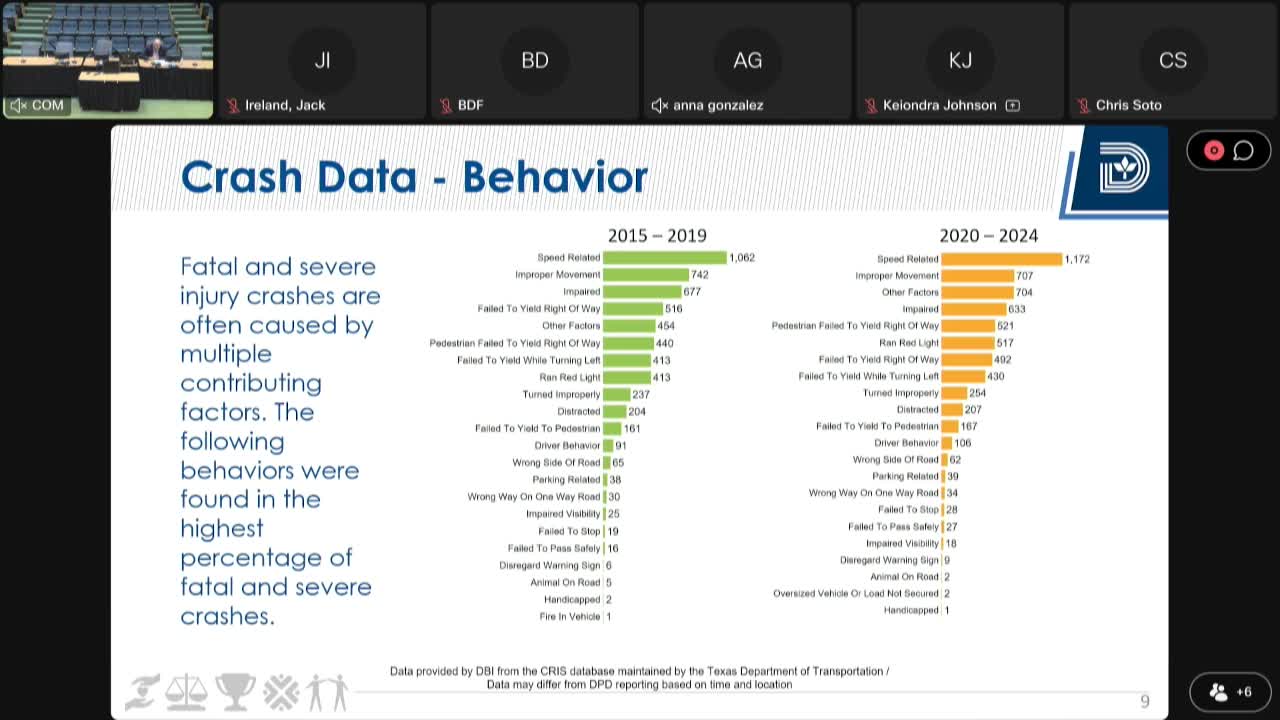Dallas prioritizes safety improvements on high injury network roadways
May 19, 2025 | Dallas, Dallas County, Texas
This article was created by AI summarizing key points discussed. AI makes mistakes, so for full details and context, please refer to the video of the full meeting. Please report any errors so we can fix them. Report an error »

Dallas officials are ramping up efforts to enhance road safety, focusing on the city's "high injury network," which accounts for a staggering 57% of severe crashes despite comprising only 7% of the roadways. During a recent transportation and infrastructure meeting, city leaders outlined a comprehensive strategy aimed at reducing fatalities and serious injuries through targeted improvements and community engagement.
Key discussions highlighted the identification of 447 street segments and 1,000 signalized intersections within the high injury network. The city is currently conducting corridor studies to assess and implement safety measures, with 22 locations under review as of March 2025. Notable projects include improvements on Ferguson Road and Loop 12, which will feature new traffic signals and enhanced sidewalks.
City officials emphasized the importance of proven safety countermeasures, such as reflective back plates on traffic signals and leading pedestrian indicators, which allow pedestrians to cross safely before vehicles receive a green light. The implementation of speed cushions has also garnered positive feedback from residents, with plans to expand this program based on community input.
Dallas Police Department (DPD) representatives discussed their role in the Vision Zero initiative, which aims to eliminate traffic fatalities. They reported over 1,800 citations issued on high injury network roads and highlighted the need for ongoing education and enforcement to address speeding and reckless driving.
Looking ahead, city leaders are advocating for legislative changes that would grant municipalities the authority to lower speed limits on neighborhood streets, a move they believe could significantly enhance safety. As the city continues to analyze crash data and refine its strategies, officials remain committed to fostering collaboration among various departments and stakeholders to ensure the effectiveness of their safety initiatives.
Key discussions highlighted the identification of 447 street segments and 1,000 signalized intersections within the high injury network. The city is currently conducting corridor studies to assess and implement safety measures, with 22 locations under review as of March 2025. Notable projects include improvements on Ferguson Road and Loop 12, which will feature new traffic signals and enhanced sidewalks.
City officials emphasized the importance of proven safety countermeasures, such as reflective back plates on traffic signals and leading pedestrian indicators, which allow pedestrians to cross safely before vehicles receive a green light. The implementation of speed cushions has also garnered positive feedback from residents, with plans to expand this program based on community input.
Dallas Police Department (DPD) representatives discussed their role in the Vision Zero initiative, which aims to eliminate traffic fatalities. They reported over 1,800 citations issued on high injury network roads and highlighted the need for ongoing education and enforcement to address speeding and reckless driving.
Looking ahead, city leaders are advocating for legislative changes that would grant municipalities the authority to lower speed limits on neighborhood streets, a move they believe could significantly enhance safety. As the city continues to analyze crash data and refine its strategies, officials remain committed to fostering collaboration among various departments and stakeholders to ensure the effectiveness of their safety initiatives.
View full meeting
This article is based on a recent meeting—watch the full video and explore the complete transcript for deeper insights into the discussion.
View full meeting
